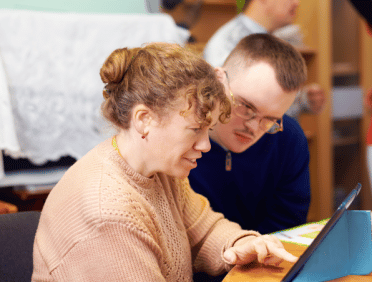In the last 50 years, there have been many pieces of legislation designed to safeguard children and adults. It’s important to understand the timeline, as well as each successive part of it, to protect all parties in the correct way.
The Children Act 1989
Before 1989, there was no single piece of legislation that protected and safeguarded children in the UK. That is why the Children Act 1989 was introduced to clarify and reform the many laws that previously affected children.
The main principles of the act is that when considering a child’s upbringing, and making critical decisions about it, the main decision-influencing criteria should be the welfare of the child. While the act does state that every acceptable effort should be made to preserve the family links and home of the child, this should not be a reason to avoid acting.
The act is very clear about what the local authority should do if they suspect that a child is either likely to suffer harm or is suffering from harm. The act stipulates what the courts will need to do to protect both of the welfare of the child, and also assigned the task of investigating the situation to the local authority.
The Children Act 2004
As a consequence of the Victoria Climbie inquiry, the 1989 edition of the act received an amendment. The Children Act 2004 takes the form of a statutory requirement that aims to integrate and improve children services, and promote strong leadership, multi-disciplinary action between different teams and early intervention to stop problems before they occur.
This new addition of the act takes a very child centred approach to protection. It aims to promote the well-being of children and encourage effective local work. Furthermore, the act tries to establish a proper base for the successful integration of planning, creating, and delivering services for children. There is also much clearer accountability for each local authority regarding children services, and helps to provide a proper legislative basis to share information effectively.
The Safeguarding Vulnerable Groups Act 2006
The Safeguarding Vulnerable Groups Act 2006 was a revolutionary new step in protecting young people and vulnerable adults. This act was created for the sole purpose of avoiding harm, or the risk of harm, by preventing anybody who was unsuitable to work with vulnerable adults or children from doing so.
The act is designed to stop these people from gaining access to these parties through the work that they do. In 2002, two children in Soham died. This meant that the new act provided a brand-new barring and vetting scheme which was designed to replace all previous arrangements for safeguarding vulnerable adults and children.
It’s generally been agreed that this policy came about as a result of an inquiry report produced in 2002. It analysed and identified many failures in the barring and vetting systems. These include the following:
There were inconsistent decisions made by employers regarding CRB disclosure.
There have been inconsistencies between different police authorities regarding the disclosure of relevant police information.
The barring system was ruled to be reactive rather than preventative. Essentially, it made decisions after problems occurred rather than before.
As a consequence of these feelings, the act was created for the purpose of minimising harm, and offering a singular vetting process that would be required for anybody who wanted to work closely with children.
The Children’s Act 2008
In 2008, there was another version of the Children’s Act which was created. This bill was designed to reform the framework for the existing care system. The purpose of this was to ensure that young people and children receive the highest quality care, and to push improvements in the delivery of services that focus on the needs of children.
The act enabled children and young people who enter the care system to be able to achieve the same level of aspiration that parents might have for their children. The key areas for the act included the following:
To improve the stability of homes for children, and to make sure children get more consistency in care.
To make sure that the experience children receive while in care doesn’t affect school performance, giving them the same opportunity for educational success.
Providing pilot local authorities the ability to test out different models of organising social care schemes by commissioning services from “South Work Practices”.
Ensuring that the focus on quality of care planning and transparency are increased, whilst at the same time improving the role of the child in the process, making sure they have influence on important decisions that affect their future.
Increase the capacity of schools to tackle the needs of children in the care system, including assigning a designated teacher on statutory footing and making sure the children in care don’t have to move schools during Years 10 and 11, which are the exam years for GCSEs.
Making sure that younger people are not asked to leave the car system before they are ready to do so, giving them more freedom to influence their independent living, and making sure they have access to guidance and support for as long as they require it.
The Care Act 2014
The Care Act 2014 primarily applies to adults. However, it is also applicable to young people and children. The act is all about following the main principles of safeguarding to put the well-being and needs of a child at the forefront of all decision-making.
These principles include empowering young people to make their own decisions about their lives via informed consent, preventing harm from occurring, taking proportionate steps to handle different types of risk, providing representation and support for those who need at the most, working with local authorities to enhance the safeguarding services, and being more accountable and transparent when providing safeguarding.
The Children and Social Work Act 2017
This act is designed to make provision for children and care and to design other provisions relating to the welfare of children as well as regulating social workers.
There are four main goals with this act. The first is all about improved decision-making and support for children in care in England and Wales. The second goal is to improve joint work at the local level to improve child protection. The third goal is to enable the safeguarding of children by providing sex education and relationship lessons in school. The final goal is to enable a new regulatory scheme for social workers in England.
GDPR and Data Protection Act 2018
The GDPR scandal introduced rapid changes around 2018, and this act applies directly to schools. As a college, school, or even employee, you have a responsibility to guarantee the safety and security of any material that includes personal data.
This is a statutory requirement that includes how systems should be maintained and monitored to check for data breaches, what to do if a breach occurs, and other regulations. The purpose of the act is to give control of personal data back to the person who owns that data, so they have a right to give informed consent surrounding what happens to their personal information.
Information Sharing: Advice for Practitioners 2018
The Sharing: Advice For Practitioners 2018 act helps improve decision making. It has seven rules which need following:
Remember that the GDPR and Data Protection Act 2018 does not limit justified information sharing for the purpose of safeguarding children.
Be transparent with children, and seek their agreement to share information if it is appropriate and safe to do so.
If in doubt, seek advice from others.
Wherever possible, seek consent before sharing information.
Consider the well-being and safety of the child in question before sharing.
Make sure that there are principles in place to help the safeguarding of the child. The disclosure must be proportionate, timely, secure, relevant, necessary and adequate.
All reasoning and decisions related to sharing must be recorded.
Sexual Violence and Sexual Harassment Between Children in Schools and Colleges 2018
This act provides core guidance on what sexual violence and harassment between children is defined as, how you have to respond to reports of violence or harassment, what the legal responsibility of your collage or school is, and the approach of your facility towards safeguarding.
This policy outlines the responsibilities which organisations in England need to meet to protect young people and children everywhere. The government has made key changes to the policy over the years which includes information about child death reviews, assessing needs and providing help, local and national child safeguarding/practicing reviews, and organisational responsibilities.
LearnQ Provides Safeguarding Training
LearnQ provides a robust training scheme for anyone who needs safeguarding training. We are committed to making sure that you have the necessary education required to safely work with children and make a meaningful difference to their lives. Take a look at what training offers are available to see the possible options – or contact us directly for more information surrounding what we provide.
To download a .pdf of this blog, please click here












